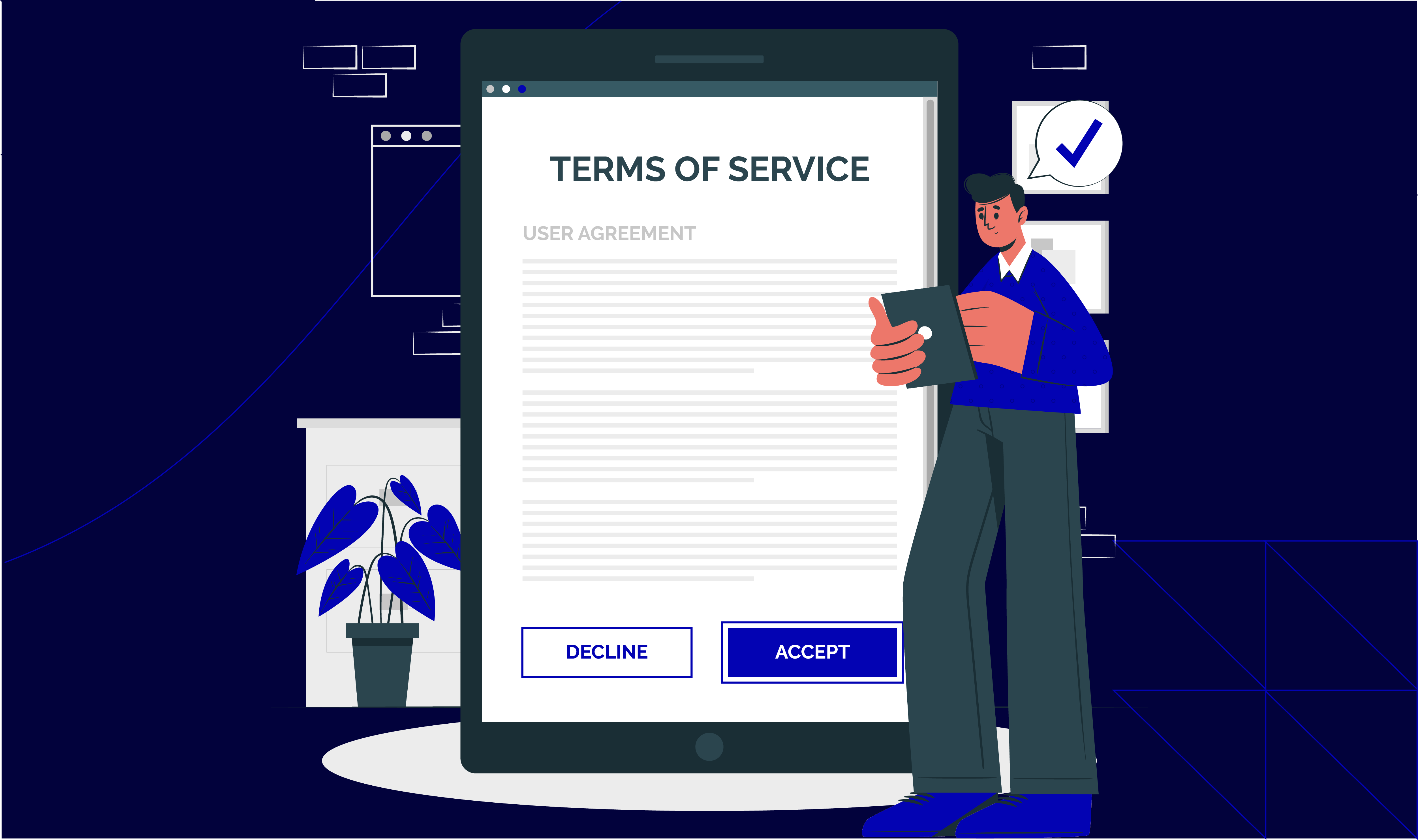Service Level Agreements (SLAs) are legally acceptable contracts executed between a provider and a client. They explain the scope of work, acceptable quality, and responsibilities of a service. In customer experience operations, especially for consumer brands and D2C businesses, SLAs are a foundation of high-quality service delivery. The SLAs reduce risks and significantly strengthen vendor relationships.
Are you running a business without an SLA? If so, unfortunately, your business is unclear, uncertain, and legally exposed!
Nowadays, Service Level Agreements (SLAs) are more than just paperwork! They are a backbone of trust between service providers and clients. Using them, you can set clear expectations on:
- What services will be delivered
- How quickly and to what standard
They define responsibilities on both sides and even provide a resolution in cases of disputes.
To deliver consistent and customer-focused experiences, every growing business should have strong SLAs that align with its CX goals.
So, want to protect your business operations and support your customer experience? In this article, let’s learn what an SLA is, the main service level agreement advantages, and some best practices you can follow!
What is a Service Level Agreement?

A service-level agreement (SLA) is a contract between a business and a service provider. It explains:
- What service will be provided?
- How will it be measured?
- What will happen if the service is not delivered as promised?
The service provider is often a vendor, and the business receiving the service is the client. Service-level agreements are important when your business depends on outside vendors for services like CX outsourcing, cloud software or managed IT systems.
If something goes wrong, the SLA helps protect your business by making the vendor responsible for resolving the issue or offering compensation. In customer experience management, SLAs often cover areas such as response times, ticket resolution speed, uptime and quality accuracy.
Some Key Components of SLA
- What service will the vendor provide
- The quality standards the vendor must meet
- How performance will be measured (for example, system uptime or response time)
- What actions can the business take if the vendor does not meet the standards (for example, getting a price discount)
Please note that service-level agreements can also be used internally, inside a business (between departments). For example, a marketing team might agree on service terms with the IT team to make sure they get support when they need it. This keeps everyone clear on responsibilities.
5 Major Advantages of Service Level Agreement

The service level agreements are standard practice for IT service providers and cloud vendors. Virtually all large enterprises and the majority of mid-sized organisations (that rely on external vendors) use SLAs.
But why? Let’s check out some of its major service level agreement advantages:
1. Clear Expectations Build Trust
An SLA creates a written agreement that defines:
- What service a provider must deliver
- How will it be measured
- What happens if they fail to meet those terms
This lets your business understand exactly what to expect from the vendor. It also makes sure both sides know their responsibilities before work begins. Such clarity reduces misunderstandings and helps the relationship build trust between CX teams and their vendors.
At Atidiv, we’ve seen how measurable SLAs drive better relationships and results, such as achieving 99% accuracy and 80% time savings for an NYC-based startup. See case study.
2. Holding Vendors and Teams Accountable
The service level agreements track performance by setting clear service targets. This creates accountability:
- The service provider knows they must meet specific targets
- Your business has a way to measure its performance
Now, if they fall short, the SLA outlines what actions you can take, such as asking for a discount or a re-work. This makes it easier to manage relationships with vendors. Atidiv helps D2C and consumer brands maintain SLA adherence rates above 95%, which minimizes escalation and downtime across support operations.
3. Fewer Service Breakdowns
A service level agreement prevents service interruptions by setting clear rules and responsibilities for both sides.
For example,
- If the agreement guarantees 99.9% system uptime.
- Now, you can monitor this and take action if performance drops.
This proactive structure helps detect small inefficiencies before they impact CX outcomes. This acts as an early warning system and lets you deal with minor issues before they cause major disruptions.
4. Helps Your Business Look More Reliable
If you are a service provider, your business must regularly meet the terms of an SLA (whether with customers or vendors). This shows that you are reliable. Customers will see that you deliver what you promise, which improves your reputation. Vendors will also take your requests more seriously.
This professional image makes your business stand out! As more people see your business as dependable, you will:
- Receive more referrals
- Win repeat customers
- Attract higher-quality vendors
For instance, Atidiv’s consistent SLA compliance helped one client reduce employee costs by 65% while maintaining 95%+ service quality. Read full case study.
5. Protects Your Business in Legal Disputes
Usually, the service level agreements are acceptable in a court of law. If a vendor fails to meet the terms of the agreement, the SLA gives you proof of what was agreed upon.
It acts as evidence and protects your business from unfair claims. This legal clarity saves time, avoids friction and builds long-term credibility with partners and clients.
5 Best Practices To Follow While Making Service Level Agreements

Studies show that companies with service level agreements in place report:
- Improved transparency
- More accountability
- Higher confidence in service delivery
This leads to stronger business relationships and, in many cases, new business opportunities. So, do you want to make one for your business? Follow these best practices:
1. Be Clear About What the Service Includes
When writing an SLA, clearly state what services the provider is offering. Primarily, you should cover the following:
- How quickly will the provider respond to requests?
- How often will the service be available?
- Are there any limits or conditions?
Also, include a “list of responsibilities” in the service level agreement for both your business and the provider. Everyone should know who is doing what! This avoids confusion and keeps the work organised. Clearly define the service scope—response times, uptime, exclusions and responsibilities.
2. Set Goals That Make Sense
The service level agreement should include goals that the service provider can actually meet! Don’t ask for more than what is realistic based on their:
- Staff
- Tools
- Systems
Goals should still meet your needs, but they must be practical! Also, build in flexibility so the SLA can be updated later as your business grows or changes. Ensure the SLA aligns with your customer expectations and not just technical deliverables.
3. Review the Agreement on a Regular Schedule
Business needs change! So, your SLA should change too. Set a schedule to review the agreement. This could be every 6-12 months. During each review, check if the service provider is still meeting your needs.
Ideally, you should update the service level agreement if there are changes in:
- Customer demands
- Business priorities
- Technology used
Keep track of all the changes in writing, so both sides have a clear record.
Atidiv regularly reviews SLAs for global CX clients to align them with changing ticket volumes, seasonal spikes and automation capabilities.
4. Measure Performance with Clear Numbers
Your service level agreement should include specific performance numbers [also called Key Performance Indicators (KPIs)]. While making an SLA and setting targets, you can follow the below industry-approved SLA metrics:
| Metric | Ideal % / Target | Explanation |
| Uptime/ Availability | 99.9% or higher | Shows how often the service is available and working without interruption. |
| Response Time | Within 1 hour (or less) | Maximum time to acknowledge a service request or incident. |
| Error Rates | As close to 0% as possible | Tracks how often service errors or failures occur during operations. |
| First-Call Resolution (FCR) | 75% or higher | Percentage of issues resolved during the customer’s first contact. |
| Customer Satisfaction | 80% or higher | Based on customer feedback collected through surveys or review forms. |
| Abandonment Rate | Below 30% | Percentage of calls where the customer hangs up before getting assistance. |
| Average Speed to Answer (ASA) | Under 20 seconds | The average time it takes for a call to be answered by a service agent. |
| Time Service Factor (TSF) | 80% within 20 seconds | Percentage of calls answered within a specific time frame. |
As a tip, only choose metrics that match your goals and are easy to measure.
Select metrics tied directly to CX impact like response time and resolution rate, to improve service experience and retention.
5. Plan for Problems and Disputes
Disagreements can happen! Thus, your service level agreement should explain how to handle them. Set a step-by-step process to resolve issues when something goes wrong. Also, describe how problems will be escalated if the first steps don’t work.
In some cases, you may even want to include service credits or discounts if the provider fails to meet agreed terms. This adds a level of accountability and gives you some protection if things don’t go as planned!
Atidiv follows structured SLA escalation models across its 24/7 operations to maintain reliability and customer trust. Explore how our CX frameworks enable 20M+ savings and 95%+ quality.
Busy Making Strong SLAs? Let Atidiv Handle Your Customer Support!

Service level agreements bring structure and accountability. They ensure both parties know what’s expected and how success is measured. From setting response times to tracking customer satisfaction, SLAs help in:
- Reducing confusion
- Preventing service disruptions
Also, they directly impact customer retention and operational efficiency. But great service isn’t just about agreements. It’s about the people behind them! That’s where Atidiv comes in.
Atidiv is a digital customer experience specialist that turns support into loyalty-building moments. We offer:
- Omnichannel messaging solutions
- Voice customer care
- Social media support
- Live chat service for website
- Inbound and outbound call center services
We manage SLA-backed customer operations with measurable outcomes:
- 80% time savings and 50% cost reduction for a US startup
- $20M+ savings with 95%+ quality scores for a business aggregator
- Up to 65% employee cost reduction for a UK media client
Stop stressing over CX! Leave SLA compliance and CX management to us, so your teams can focus on scaling your business confidently.
Outsource your customer support to Atidiv today!
FAQs On Service Level Agreement
1. What if my service provider doesn’t meet the SLA terms?
If your provider fails to meet the service level agreement terms, you can refer to the agreement for penalties or remedies, like service credits. Having these details documented gives you protection.
2. How do I know which SLA metrics to include?
Ideally, you should choose metrics that affect your business the most, such as:
- Response time
- Uptime
- Issue resolution speed
While making a choice, try to focus on what impacts your customers and operations directly. For CX operations, include quality and satisfaction metrics such as FCR and CSAT.
3. Can I change the SLA later if my business grows?
Yes, service level agreements should be reviewed and updated regularly. As your business grows, your service needs may also change! Thus, you need to make adjustments based on:
- Performance
- Feedback
- New goals
A flexible SLA ensures your service delivery remains efficient and customer-focused.
4. Do I need a separate SLA for each vendor?
Yes, it’s best to have separate service level agreements for each vendor as each:
- Provides different services
- Requires specific terms
By having a tailored SLA, you can avoid confusion and ensure clear expectations for both sides. Tailored SLAs reduce ambiguity and ensure accountability.
5. Is it worth creating SLAs for internal teams?
Yes! Internal SLAs enhance collaboration and consistency between departments like CX, marketing and IT, ensuring faster issue resolution and smoother workflows.

